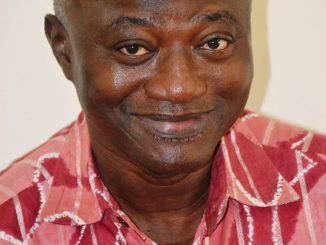
t has often been said that a fall begins with a stumble. Thus the process of a fall commences sometimes long before it actually manifests. As voters go to the polls in Sierra Leone on November 17, the largest opposition Sierra Leone Peoples Party (SLPP) should begin to see the hand writing on the wall. Series of happenings within and without the party will render the party’s continuity in its current role as the party in opposition except their strategists retrace their steps which, unfortunately, would have a prospect of being meaningful in subsequent elections after November 17.
Since 1967 when they were bolted out of power by the then opposition APC in a controversial election, the SLPP only ascended to governance in 1996 in the midst of the country’s devastating civil war. With the masses in dire quest for a multiparty democracy, there was the common rational that electing a civilian government would help to bring the war to an end. That premise prompted voter enthusiasm for which many citizens paid dearly; some losing their lives while others lost their limbs as they defied the diabolical ploys of the warring combatants who cherished the persistence of wanton destruction over national civility.
Thus in a somewhat hastily organized democratization process, the SLPP chose Ahmed Tejan Kabba as its flag bearer and presidential candidate while the veteran John Kerefa-Smart headed the United National People’s Party (UNPP) and Late Thaimu Bangura, who became the power broker, was the presidential candidate for the People’s Democratic Party ( PDP). Partly due to his paternal northern roots, coupled with the fact that the northwest was in political disarray with the UNPP, PDP and the APC all scrambling for the northwestern votes, Tejan Kabba won the presidency with the help of a coalition with the PDP in a run-off election in 1996. The Tejan Kabba factor, was perhaps the most significant political blessing enjoyed by the SLPP since independence!
Foremost, the SLPP, which had almost suffered from extinction during the protracted years of APC reign, revived and took on a national character aided by Kabba’s magnanimity and his bi-ethnic background. Thus Kabba was able to take the SLPP into unthinkable northern frontiers while maintaining the traditional southeastern base of his maternal roots. With the gracious exit of Pa Kabba, together with his “factor”, the SLPP began to shrink; relinquishing its grip on those northwestern territories “conquered” by Kabba.
What has sped the shrinkage of the party is the fact that the inner core (or what I would call the “Wunde Circle”) of the SLPP perceived it a mistake to have allowed a northerner to head the party and essentially vowed that such would never be allowed to happen again. With that revelation, most of the northwesterners began to find their levels. The process which started as a trickle during the Berewa era turned into a blown-out hemorrhage in this year’s election because of the overt manifestation of the “Wunde” decision-making process thereby further trimming the party to its bare skeleton.
Against this background, let us look at some arithmetical scenarios based on the current voter registration figures published on the NEC web site. With the biometric voter registration process, the voter list has been heavily purged with the southeast disproportionately impacted. About ½ million voters were trimmed off! All things being equal, and looking at the fact that there does not seem to exist a very formidable third-force party as we had in the past election, the APC and the SLPP do firmly maintain control over their traditional strongholds of the northwest and the southeast respectively. Numerically, the APC is standing on about 1.6 million (59%) potential registered voters in the northwest while the SLPP has a potential of 1.1 million (41%) voters in the southeast. Like a game of checker, these are the positions of strength both parties have heading into the election on November 17.
So, looking at the APC’s 59% as against the SLPP’s 41% of potential votes, let us take a further look at some other dynamics. First, President Koroma’s power of the incumbency and his relatively good governance as perceived by many in the southeast has turned most of the southeastern districts into battlegrounds more than the northwest is for the SLPP. Besides, the areas in the north where there were some SLPP influence (i.e. Kabala and Kambia); have significantly experienced open defection of its members to the APC in their droves. In the past election, the SLPP garnered about 20% of votes in the whole of the Northern Province. This percentage is likely to drop in this election season. This has also been the case is the Western Area which saw 30% votes for the SLPP in the past election. This percentage may still stand or slightly dwindle. Thus the competition for votes seems intense within the SLPP’s 41% than in the APC’s 59%.
Within the SLPP’s 41%, there is intense competition in Kono, the Vice-President’s home district, between SLPP and APC of which a 50/50 share will further put a dent into the opposition’s already meager votes. In Bonthe and Pujehun, where the PMDC did well in the past election, it is very likely that the SLPP will give up some of what remains of the 41%. In the cosmopolitan areas of Bo, Kenema and Kailahun districts, President Koroma, in the last election scored at least 30% of the votes and it is very likely that that percentage will increase judging from the series of fallouts and defections of prominent SLPP members in that region.
In conclusion, the best case scenario for the SLPP is to maintain its potential 41% votes. This could happen by replacing its votes lost to the APC in the southeast by winning equal number of votes in the northwest. Going by this analysis, by the end of Saturday, November 17, 2012, the APC Presidential candidate will have scored 59% of the votes cast while the SLPP Presidential candidate will garner 41%. It is very likely that the 59% will be higher but within a statistical margin of error of +/- 5% points.




Leave a Reply